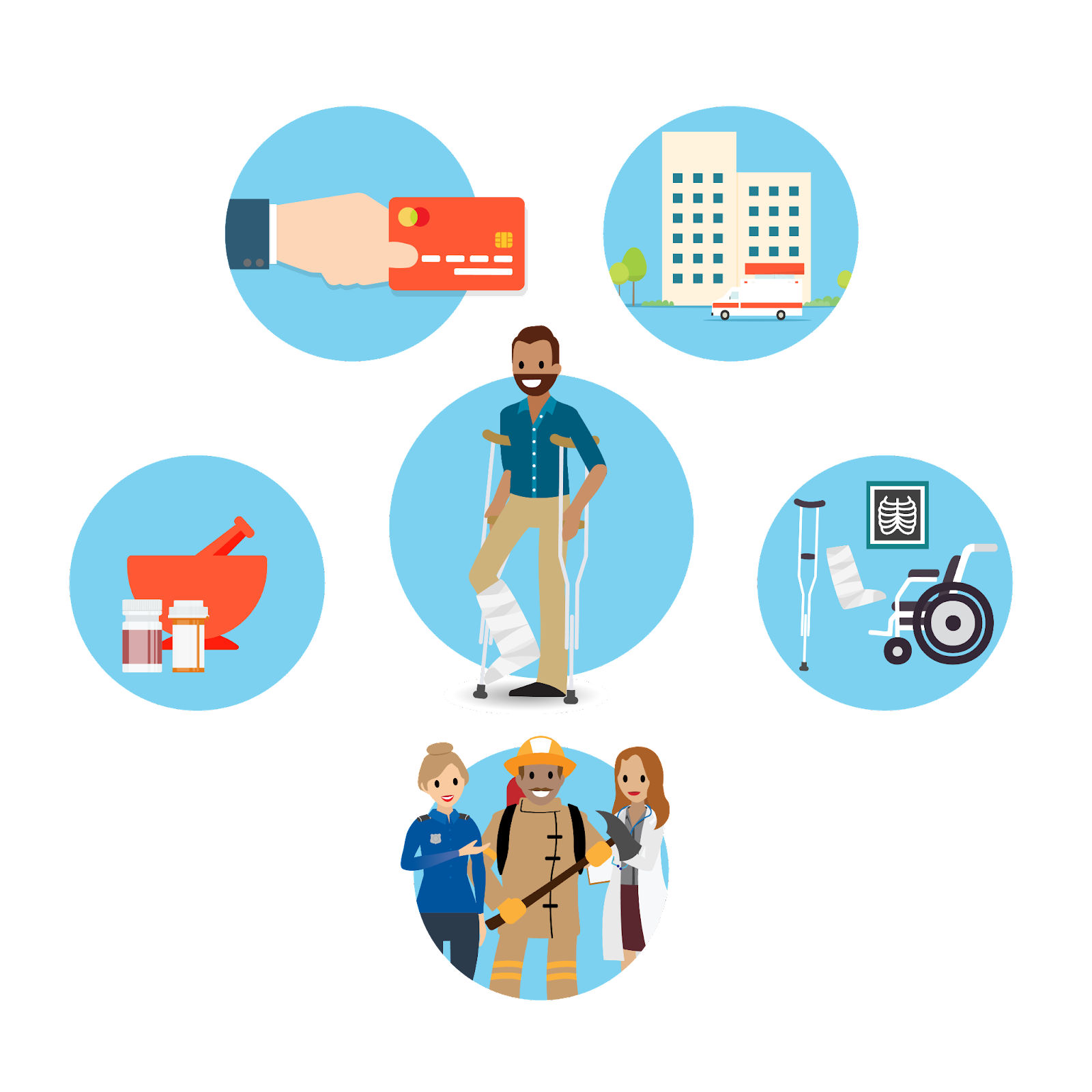Meet the Healthcare and Life Sciences Industry
Learning Objectives
After completing this unit, you’ll be able to:
- Discuss the main business objectives of the healthcare and life sciences industry.
- Describe the five sectors of the healthcare industry.
- Identify major trends impacting healthcare.
What Healthcare Cares About
Every day, people go to work in organizations and businesses that focus on human health. In the US alone, healthcare is a US$3 trillion industry. Around the world, companies and institutions need help navigating the complexities of healthcare and life sciences. Let’s learn more about the industry and its major sectors.
Overall, participants in the healthcare industry are out to achieve what they call the “quadruple aim.” This means they want to:
- Improve the experience of healthcare.
- Improve the health of populations.
- Improve the work life of healthcare providers, including clinicians and staff.
- Reduce the per-person costs of healthcare.
Achieving the first three aims is why many people enter the healthcare industry. However, businesses still need to make a profit, and that money leads to the expansion of services, research, and benefits.
What Life Sciences Study
You’ll often hear the combined phrase “healthcare and life sciences” when discussing this overall industry. There's a clear distinction between these two terms.
In general, life sciences focus on research and manufacturing of drugs and devices used in healthcare. Life sciences include biotechnology experts, medical device developers, and pharmaceutical manufacturers. Participants have the same quadruple aims as healthcare companies.
Focus on the Patient
The healthcare industry revolves around the patient. To understand the healthcare system, let’s go through a particularly bad day with Alvin, a professional dog walker.
Alvin is walking five dogs when a squirrel darts across the street. He gets tangled in the leashes and falls when the dogs give chase. Ouch! An ER nurse greets him at the hospital with a wheelchair, and the doctor confirms by X-ray that Alvin broke his leg. The doctor:
- Prescribes medication to manage Alvin’s pain.
- Applies a cast to set the bone.
- Gives him crutches to help him walk.
Before he heads home, Alvin pays a co-pay for the services. His insurance company settles the bill once the hospital submits it to them. After the cast comes off, Alvin schedules physical therapy to help him return to 100%.
Alvin’s injury and recovery touch on all five healthcare and life sciences industry sectors.
-
Providers: People and facilities that provide healthcare to individuals, such as a hospital
-
Payers: Insurance carriers or health plans that cover medical, behavioral, and pharmaceutical expenses
-
Pharmaceuticals: Companies that discover, develop, produce, and market medication for both preventative and remedial therapy
-
MedTech: Companies that own medical devices, which are the tools, machines, and implants that diagnose, cure, treat, or assist the body
-
Public Sector Health: Organizations engaged in optimizing local, state, and federal government constituent health services, care payments, public health and emergency response, social services, research, and regulatory issues

Let’s finish your quick look at the healthcare and life sciences industry with a peek at trends. One trend touches on payers (sometimes spelled “payors”), also known as insurance carriers. It’s good to know that payers call their customers “members,” so be sure to remember that, too.
Healthcare and Industry Trends
To say the healthcare industry is continually changing is an understatement. But it’s a good idea to know some current trends affecting the industry and the businesses in it.
Trend: Greater patient awareness of the total healthcare experience
Why it’s happening: People look for choices that provide value and convenience.
Why it matters:
- Informed members who shop around put pressure on insurance carriers, doctors, and hospitals to demonstrate value.
- Modern members want an easy-to-use website, appointments via video, easy-to-understand bills, and more.
Trend: Aging population
Why it’s happening: In the US, 3 million people per year will reach retirement age for the next 20 years.
Why it matters: A large aging population places greater demand on the system.
Trend: Growing number of people with chronic conditions
Why it’s happening:
- Healthcare isn’t focused on prevention or promoting a healthy lifestyle.
- Uninsured and underinsured people are reluctant to access care.
Why it matters: Chronic conditions, many of which are preventable, create the need for more long-term care and costly treatments.
Trend: Increased mergers and acquisitions (M&A) combining health insurance with providers, retail pharmacy, pharmacy managers, and at-home care
Why it’s happening: Organizations are diversifying their lines of business to drive growth and profitability, and expanding their reach with consumers and members.
Why it matters: New organizational combinations are intensifying competition, evolving new business models, and creating new ways to engage members in their health.
Now you're up to date on some key trends, fundamental aims, and healthcare's five sector definitions. Feeling better already?
Resources
- External Site: HealthCare.gov Glossary
- Trailhead: The Healthcare Provider Industry Sector
- Trailhead: The Healthcare Payer Industry Sector
- Trailhead: The Life Science Pharmaceutical Industry Sector
- Trailhead: The Life Science MedTech Industry Sector
- Trailhead: The Public Sector Health Industry Sector
